Best Golf Wedges 2025: A surprise winner tops our full test
Last updated:
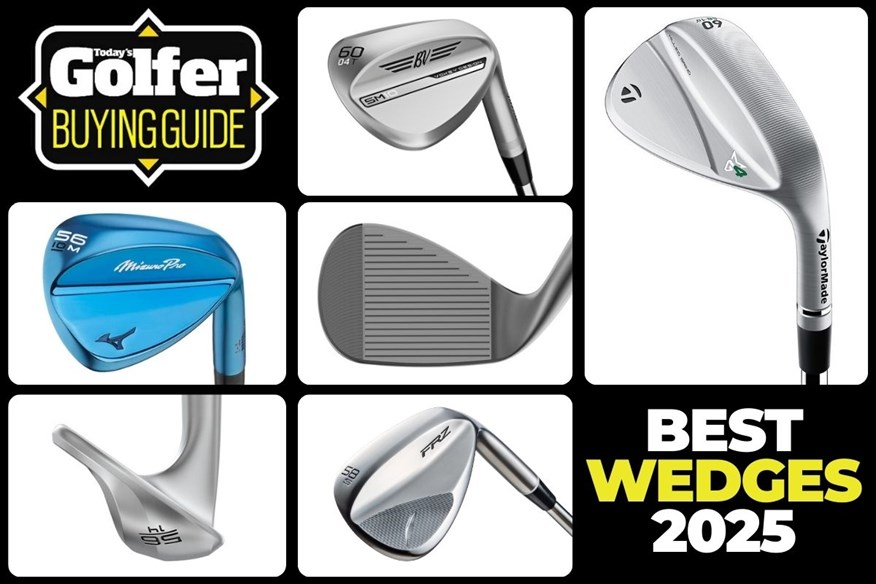
Click Here to find out how we tested the Best Golf Wedges of 2025
Finding the right wedges for your game isn’t always easy – especially when feel and confidence matter just as much as performance. But our complete guide to the Best Golf Wedges in 2025 will help narrow your search and highlight the standout models.
Finding the best golf wedges isn’t just about data. Though launch numbers and spin rates matter, it’s also about confidence, consistency, and feel. Like putters, wedges are personal tools that need to suit your technique, personal preferences, and short-game style.
But, unlike putters, wedges wear out. Over time, the grooves dull, spin drops, and control fades – meaning it’s time for an upgrade. The problem? Your trusted model has probably been replaced by something new as brands tweak designs year after year. This makes replacing wedges more complicated than simply buying the same thing again. Even if you stick with the same brand, there’s no guarantee the latest version will offer the same sole grind, shape, or feel you’re used to.
With so many options, materials, and marketing buzzwords, choosing a new wedge can feel overwhelming. So, how do you actually pick?
We’ve tested every 2025 model (you can read about how we tested at the top of the page, just below the main image) to highlight the best golf wedges of the year. We’ve also answered all the key questions about choosing the right wedge in our buying guide at the bottom of the page. But for now, let’s dive into our top picks.
JUMP TO:
- Best Golf Wedges 2025 at a glance
- Best Wedges 2025
- Experts’ Choice Wedge 2025
- Best for Approach Shots
- Best for Pitching Shots
- Best for Stopping Power
- Data Tables
- Buying Guide
- FAQs
Best Golf Wedges 2025: At a glance
Best Wedge Overall: TaylorMade Milled Grind 4 | View Offer
Best for Approach Shots: Cleveland CBX4 | View Offer
Best for Pitch Shots: Cobra King | View Offer
Best for Stopping Power: Mizuno Pro T-3 | View Offer
Experts’ Choice: Titleist Vokey SM10 | View Offer
Best Golf Wedges 2025: Overall
Best Overall Performance
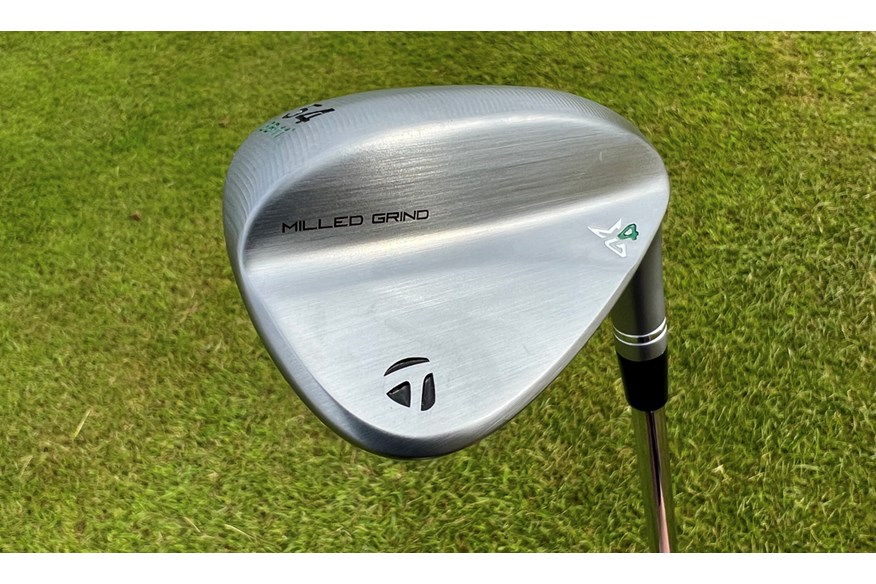

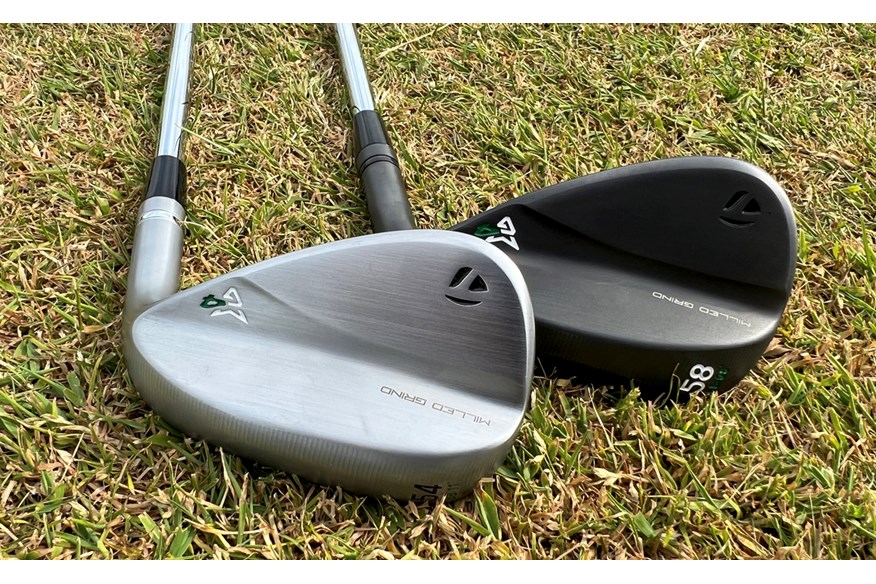
The best overall performance in our wedge test and one that will surprise few. Used by the latest winner of the Career Grand Slam, the TaylorMade Milled Grind 4 wedges offer incredible spin and flight control from their technology and design.
Like the Hi-Toe sister model, TaylorMade have chosen to refine their creation in key areas, such as the Spin Tread technology that allows for more spin in wet conditions, as well as being offered in a raw face to further assist performance. Finally, TaylorMade have applied a new finish to the MG4 to reduce glare and blend in with the raw face.
Around the greens and in the bunkers, the MG4 wedge has continued with its high standards of play, with the testing team noting that lob shots were incredibly easy to repeat.
What our tester says:
TaylorMade are just getting better and better with their wedge design! I like the classic look of the Milled Grind slightly more than the Hi-Toe model, and I think it makes me more comfortable because of that. The control and spin on offer is amazing, and it’s an elite-level wedge being offered by the brand now.
Data
Approach
Clubhead Speed 80.1 MPH | Ball Speed 84.1 MPH | Carry 102.0 Yards | Spin 10,046 RPM | Launch 27º | Height 23.4 Yards | Descent Angle 48.9º | L-R Dispersion 3.9 Yards
Pitching
Clubhead Speed 61.1 MPH | Ball Speed 67.1 MPH | Carry 74.3 Yards | Spin 7,614 RPM | Launch 26.6º | Height 13.3 Yards | Descent Angle 41.1º | L-R Dispersion 3.9 Yards
| Loft Options | 46º / 48º / 50º / 52º / 54º / 56º / 58º / 60º |
| Grinds | Low / Low-V / Standard / Standard-C / High / High-W |
| Finishes | Chrome / Black |
| Stock Shaft | True Temper Dynamic Gold 115g Tour Issue |
| Stock Grip | Lamkin Crossline 360 |
Runner-Up for Best Overall
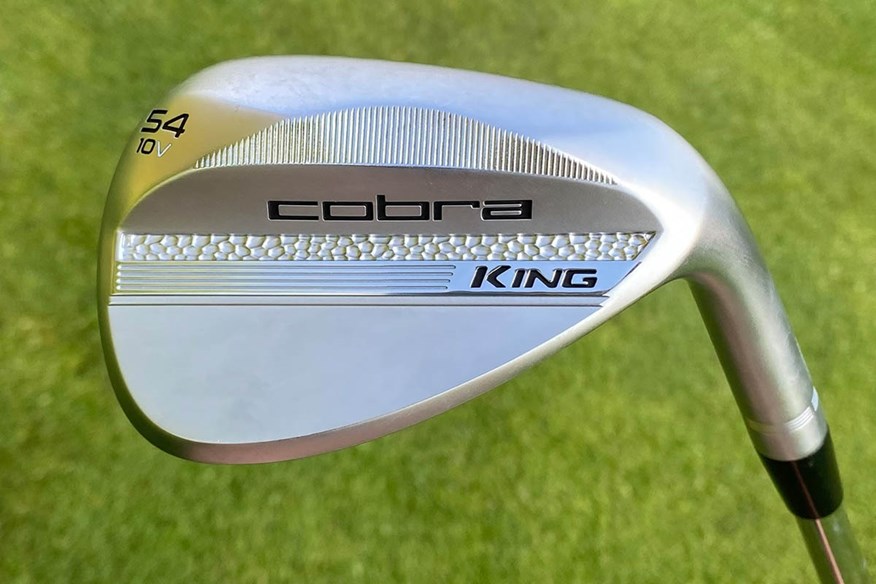

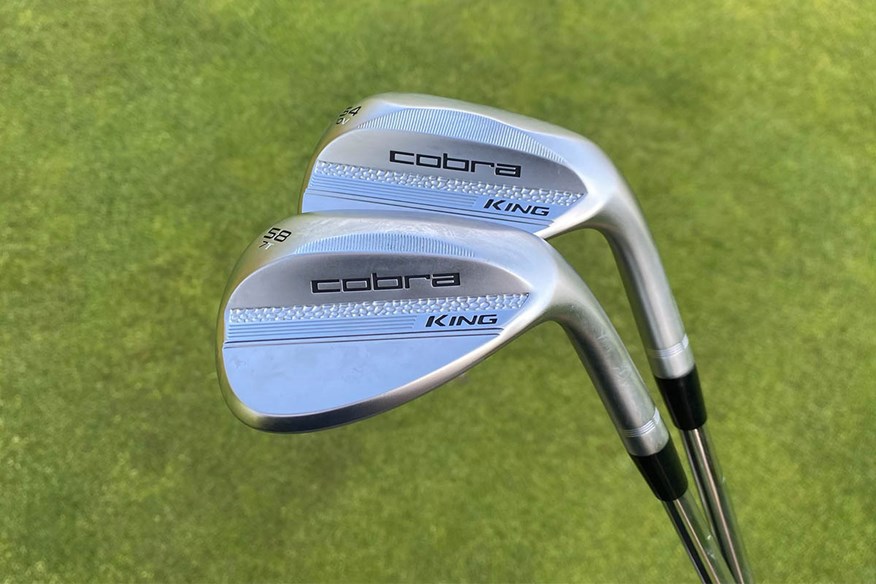
Cobra’s 2025 edition of the King wedge is seriously impressive in every aspect that you could ask for from a wedge. Our close runner-up for best overall wedge using the data tables, one that offers impressive stopping power from its combination of high spin and steep descent angles.
Having utilised MiM (Metal Injection Molding), which originally debuted in Cobra’s iron and wedge line back in 2020, to produce a softer feel and long-lasting performance from the tighter grain structure that the technology has allowed their engineers to achieve.
The King also lived up to its name in our bunker testing, with several of TG’s staff speaking on how impressed they were with the performance from the sand, even after a day of constant wear-and-tear.
What our tester says:
There’s a unique style to the Cobra King wedges in every way. The badging on the back, with the almost pebble-dash bar effect, makes this club stand out on the shelf compared to other models. There’s also quite a rounded look, with the leading edge almost curving into the toe and then the topline after it. It doesn’t suit my natural preferences, but there’s no doubt it plays well!
Data
Approach
Clubhead Speed 77.5 MPH | Ball Speed 79.9 MPH | Carry 95.4 Yards | Spin 9,522 RPM | Launch 28.6º | Height 22.3 Yards | Descent Angle 48.8º | L-R Dispersion 1.6 Yards
Pitching
Clubhead Speed 64.5 MPH | Ball Speed 69.6 MPH | Carry 79.3 Yards | Spin 7,694 RPM | Launch 28.5º | Height 15.9 Yards | Descent Angle 44.1º | L-R Dispersion 2.4 Yards
| Loft Options | 48º / 50º / 52º / 54º / 56º / 58º / 60º |
| Grinds | Versatile (V) / Drop (D) / Widelow (W) / Tour (T) |
| Finishes | Chrome / Black / Raw |
| Stock Shaft | True Temper Dynamic Gold Spinner |
| Stock Grip | Lamkin Crossline 60R |
Third-best Overall
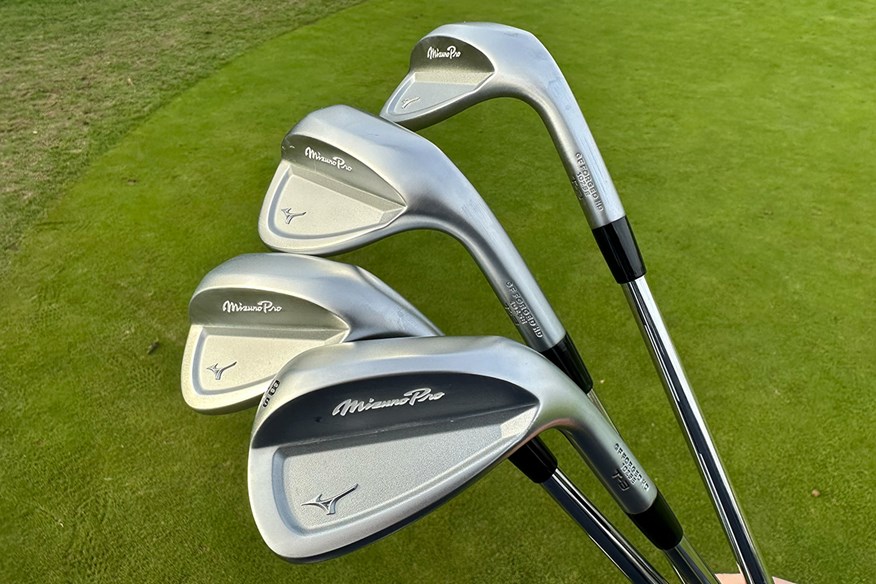

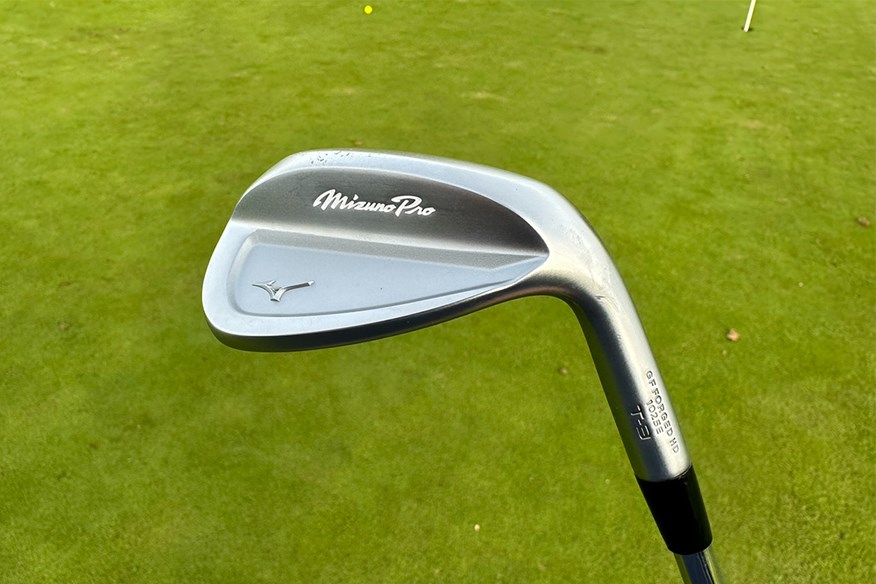
The Mizuno Pro T-3 wedge, compared to the T-1, might seem like an outlier for the Japanese company. Mizuno have had inconsistent success with their S-series wedge family, often mistaken for a Game Improver style of wedge despite still offering a relatively compact shape.
By folding the S-line into the ‘T’ family, Mizuno are looking to build immediate trust and recognition for the T-3 wedge as a serious option for serious golfers. While it does feature a small cavity back design, there’s still impressive versatility on offer here.
The additional forgiveness is only going to add confidence to your game, and, if it doesn’t, the incredible control will, with the Mizuno Pro T-3 wedge producing the highest spin from our full swing data as well as great partial swing performance to help secure a third best overall position as well as best for stopping power.
What our tester says:
Honestly, I’d struggle to tell the difference between the T-1 and the T-3 at address. They both look superb, with maybe, maybe, a slightly larger size to the T-3, but nothing close to putting me off. It’s a great wedge, and I feel like the extra help from the cavity will be great for plenty of golfers out there.
Data
Approach
Clubhead Speed 79.7 MPH | Ball Speed 83.1 MPH | Carry 100.1 Yards | Spin 10,096 RPM | Launch 27.7º | Height 23.4 Yards | Descent Angle 49.3º | L-R Dispersion 4.2 Yards
Pitching
Clubhead Speed 63.1 MPH | Ball Speed 67.9 MPH | Carry 76.2 Yards | Spin 7,595 RPM | Launch 27.7º | Height 14.4 Yards | Descent Angle 42.4º | L-R Dispersion 1.2 Yards
| Loft Options | 46º / 48º / 50º / 52º / 54º / 56º / 58º / 60º |
| Grinds | S / M / C |
| Finishes | Soft White Only |
| Stock Shaft | True Temper Dynamic Gold S400 |
| Stock Grip | Golf Pride MCC |
Best Golf Wedges 2025: Experts’ Choice
The most versatile wedge family in 2025
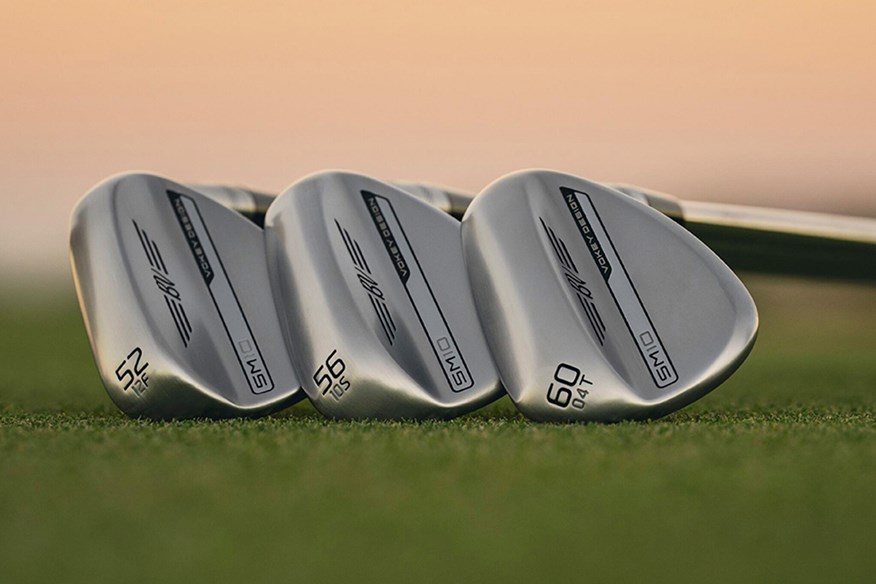

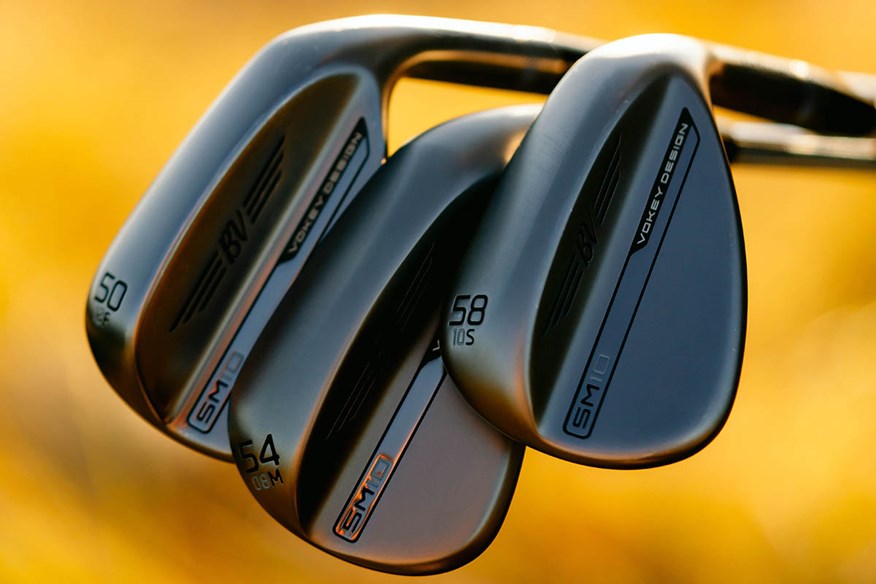
Winner of our Expert’s Choice selection in 2025, Titleist’s Vokey series has been the gold standard in wedge design at both tour and amateur level for generations now, and with good reason.
Titleist and Vokey continue to further refine their product with each new model, and the SM10 is simply the latest pinnacle in their undertaking. This current Spin Milled wedge features an altered Centre of Gravity (CG) location to promote consistent flighting across every loft in the range, along with every wedge undergoing a specific heat treatment before being inspected for quality.
Along with the highest level of quality checking, the SM10 has earned the Experts’ Choice award for the sheer amount of choice when it comes to finishes, grinds, and bounce options, as well as one of, if not the, widest varieties of components in shafts and grips on the market.
What our tester says:
I think it wouldn’t be unfair to call Vokey wedges a jack-of-all-trades. That might seem like a bad thing, but what I mean is that they can do anything you need them to, and they can be adapted to your needs. It’s still one of the best wedges ever made.
Data
Approach
Clubhead Speed 80.7 MPH | Ball Speed 87.1 MPH | Carry 107.5 Yards | Spin 9,366 RPM | Launch 27.3º | Height 25.5 Yards | Descent Angle 49.9º | L-R Dispersion 2.3 Yards
Pitching
Clubhead Speed 61.0 MPH | Ball Speed 68.1 MPH | Carry 76.7 Yards | Spin 6,935 RPM | Launch 27.0º | Height 14.0 Yards | Descent Angle 41.5º | L-R Dispersion 2.5 Yards
| Loft Options | 46º / 48º / 50º / 52º / 54º / 56º / 58º / 60º /62º (44º Wedgeworks) |
| Grinds | F / S / M / D / K / T Stock (A / A+ / L / K* / V Wedgeworks) |
| Finishes | Tour Chrome / Nickel / Jet Black / Raw (Wedgeworks) / Oil Can (Limited Release) |
| Stock Shaft | True Temper Dynamic Gold S200 |
| Stock Grip | Golf Pride Tour Velvet |
Best Golf Wedges 2025: Best for Approach Shots
Best for Approach Shots
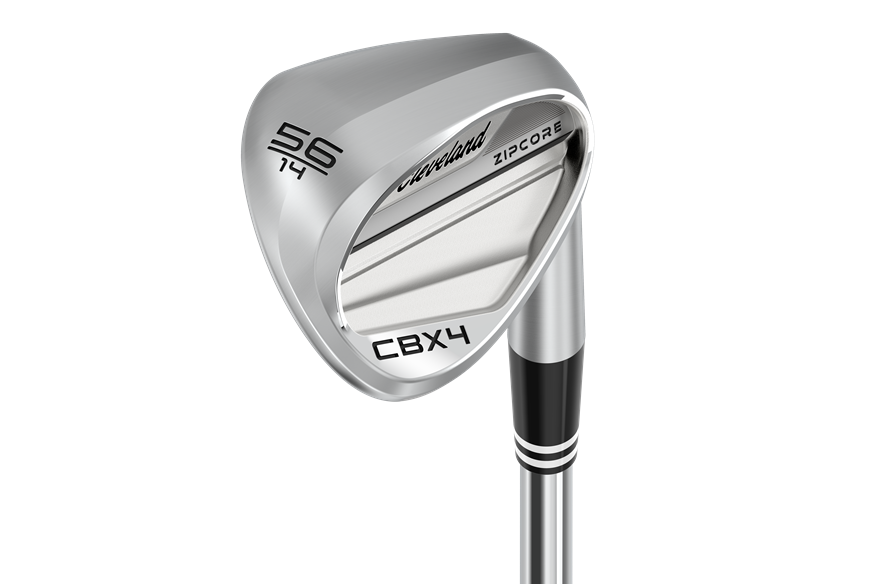

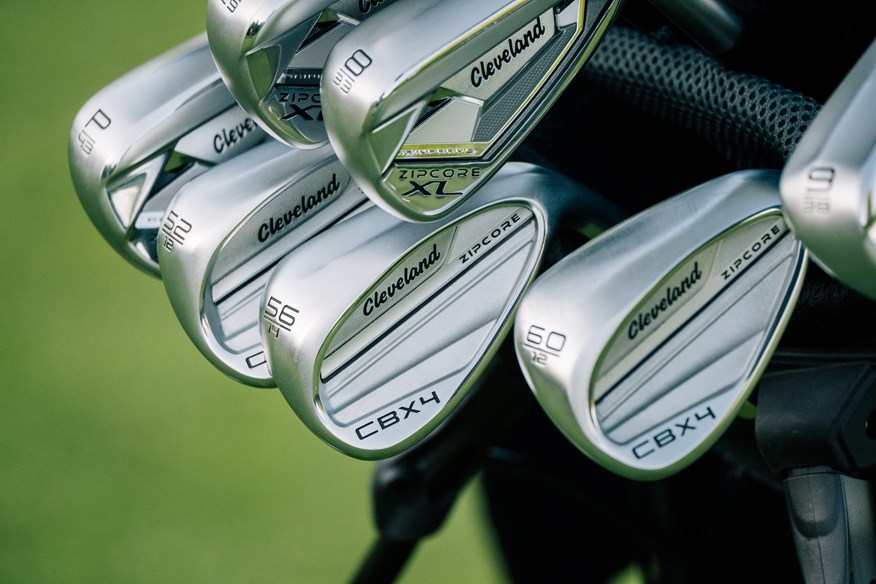
The Cleveland CBX wedge series has made a name for itself as one of the earliest options of a dedicated wedge line that was built to complement a Game Improver set of irons while retaining some versatility.
You can see this design element within the full swing ‘Best Approach’ category, where the CBX4 took first place for its incredible consistency, much like what a Game Improver iron is meant to provide, with additional forgiveness over a traditional blade wedge construction.
Sadly, the CBX4 hasn’t performed quite as well in our greenside testing, with the team finding the wider sole harder to hit with control on lob shots. Where the Cleveland model does get some points back, though, is in its ease of use from the bunker. The larger base now making it easier to resist digging into soft sand than with others.
What our tester says:
I don’t think it’s fair to judge the looks of this wedge according to my preferences. It’s definitely made for golfers of a certain ability, so it should be viewed in that way. So, considering that thought, I think this is a great wedge for the golfer who needs more help while still being better than a stock iron set option for around the greens.
Data
Approach
Clubhead Speed 79.4 MPH | Ball Speed 85.5 MPH | Carry 105.1 Yards | Spin 9,306 RPM | Launch 27.2º | Height 24.3 Yards | Descent Angle 49.1º | L-R Dispersion 0.9 Yards
Pitching
Clubhead Speed 60.9 MPH | Ball Speed 67.8 MPH | Carry 76.2 Yards | Spin 6,923 RPM | Launch 27.5º | Height 14.1 Yards | Descent Angle 42º | L-R Dispersion 3.6 Yards
| Loft Options | 44º / 46º / 48º / 50º / 52º / 54º / 56º / 58º / 60º |
| Grinds | V / S / C |
| Finishes | Tour Satin Only |
| Stock Shaft | KBS Hi-Rev 2.0 115g |
| Stock Grip | Lamkin Crossline 360 |
Runner-up in Best Approach Shots


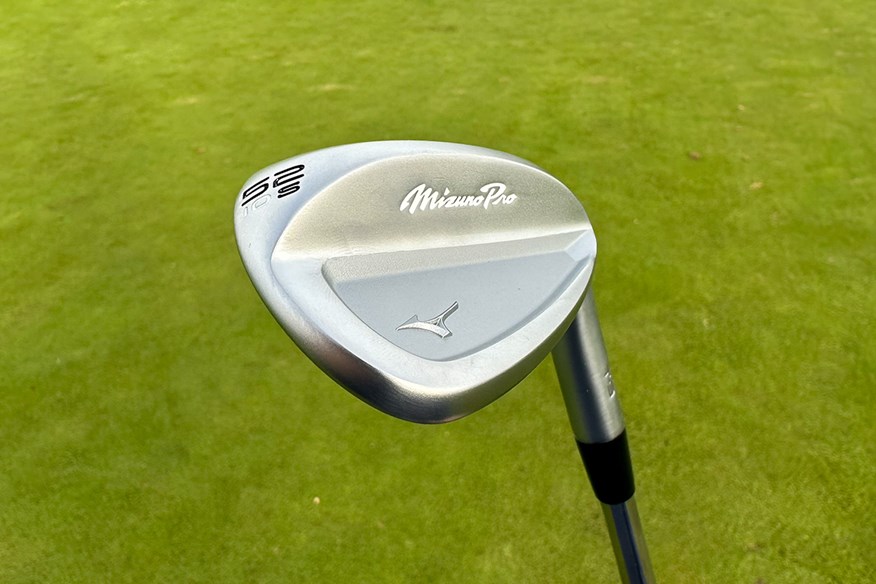
In a similar fashion to the Cleveland CBX4 above, the Mizuno Pro T-3 wedge benefits from the cavity built into the club, although it certainly isn't as overwhelming in size as the Cleveland model. When we're hitting full swing shots, the ability of engineers to commit weight into a more forgiving position allows for the wedges to perform more consistently, in the style of a cavity back iron.
The T-3 wedge proves this concept with the impressive consistency it displays in Ball Speed, Carry, Spin, Launch, and Descent Angle. Consistency with wedges is a key aspect, one that we often forget about by focusing on greenside play, but it allows for more predictability when you're attacking from distance.
The Mizuno Pro T-3 might be the best combination on the market of forgiveness and performance, with a relatively small shape that gives the user great control around the green while offering more help at full yardage.
What our tester says:
Honestly, I’d struggle to tell the difference between the T-1 and the T-3 at address. They both look superb, with maybe, maybe, a slightly larger size to the T-3, but nothing close to putting me off. It’s a great wedge, and I feel like the extra help from the cavity will be great for plenty of golfers out there.
Data
Approach
Clubhead Speed 79.7 MPH | Ball Speed 83.1 MPH | Carry 100.1 Yards | Spin 10,096 RPM | Launch 27.7º | Height 23.4 Yards | Descent Angle 49.3º | L-R Dispersion 4.2 Yards
Pitching
Clubhead Speed 63.1 MPH | Ball Speed 67.9 MPH | Carry 76.2 Yards | Spin 7,595 RPM | Launch 27.7º | Height 14.4 Yards | Descent Angle 42.4º | L-R Dispersion 1.2 Yards
| Loft Options | 46º / 48º / 50º / 52º / 54º / 56º / 58º / 60º |
| Grinds | S / M / C |
| Finishes | Soft White Only |
| Stock Shaft | True Temper Dynamic Gold S400 |
| Stock Grip | Golf Pride MCC |
Third-best for Approach Shots
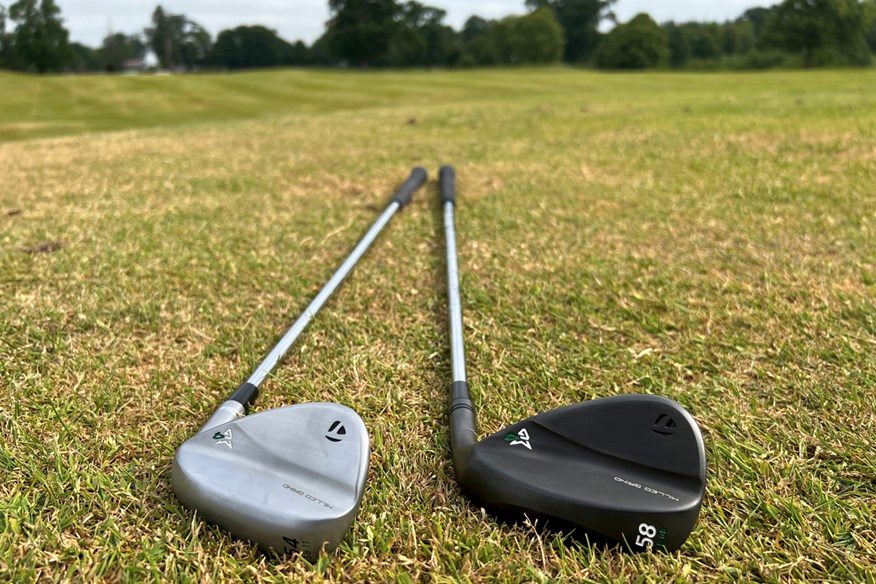

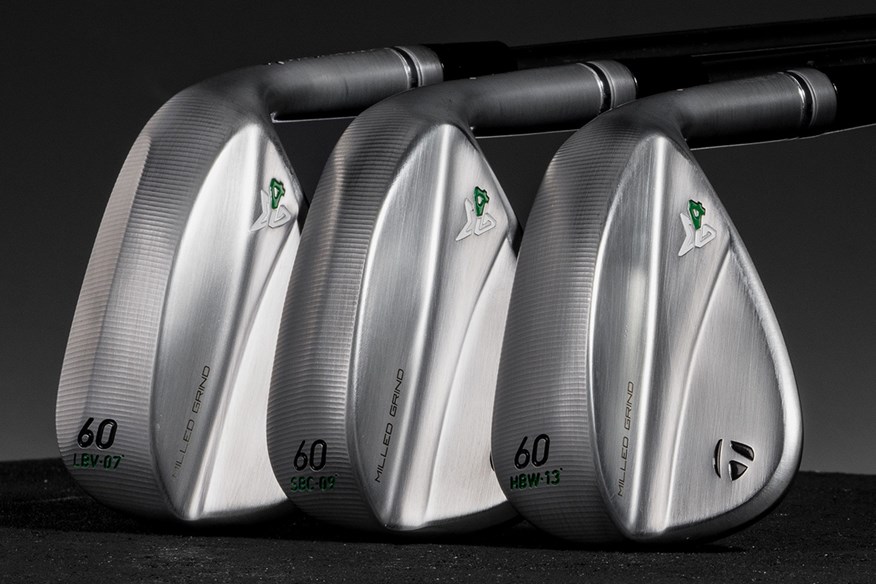
If we're going to award a wedge our 'Best in Test,' you'd expect it to feature strongly in all our other categories to have earned that best overall feature.
The TaylorMade MG4 wedge has been one of the highest spinning wedges we've seen for 2025, with the Milled Grind producing an average of 10,046 rpm from the shots we've collected. The only other model that broke the 10k mark is the Mizuno Pro T-3, so you can already see a great reason to consider this TaylorMade model when you're hitting full shots into the green, especially when you notice MG4 also has the tightest spin consistency of any wedge in this test.
Aside from the awesome amount of zip you'll get from the spin, the full table also shows how solid the deviation numbers are across the board, with particular highlights in the Launch, Height, Descent Angle, and the Left-to-Right Dispersion.
What our tester says:
TaylorMade are just getting better and better with their wedge design! I like the classic look of the Milled Grind slightly more than the Hi-Toe model, and I think it makes me more comfortable because of that. The control and spin on offer is amazing, and it’s an elite-level wedge being offered by the brand now.
Data
Approach
Clubhead Speed 80.1 MPH | Ball Speed 84.1 MPH | Carry 102.0 Yards | Spin 10,046 RPM | Launch 27º | Height 23.4 Yards | Descent Angle 48.9º | L-R Dispersion 3.9 Yards
Pitching
Clubhead Speed 61.1 MPH | Ball Speed 67.1 MPH | Carry 74.3 Yards | Spin 7,614 RPM | Launch 26.6º | Height 13.3 Yards | Descent Angle 41.1º | L-R Dispersion 3.9 Yards
| Loft Options | 46º / 48º / 50º / 52º / 54º / 56º / 58º / 60º |
| Grinds | Low / Low-V / Standard / Standard-C / High / High-W |
| Finishes | Chrome / Black |
| Stock Shaft | True Temper Dynamic Gold 115g Tour Issue |
| Stock Grip | Lamkin Crossline 360 |
Best Golf Wedges 2025: Best for Pitch Shots
Best for Pitching
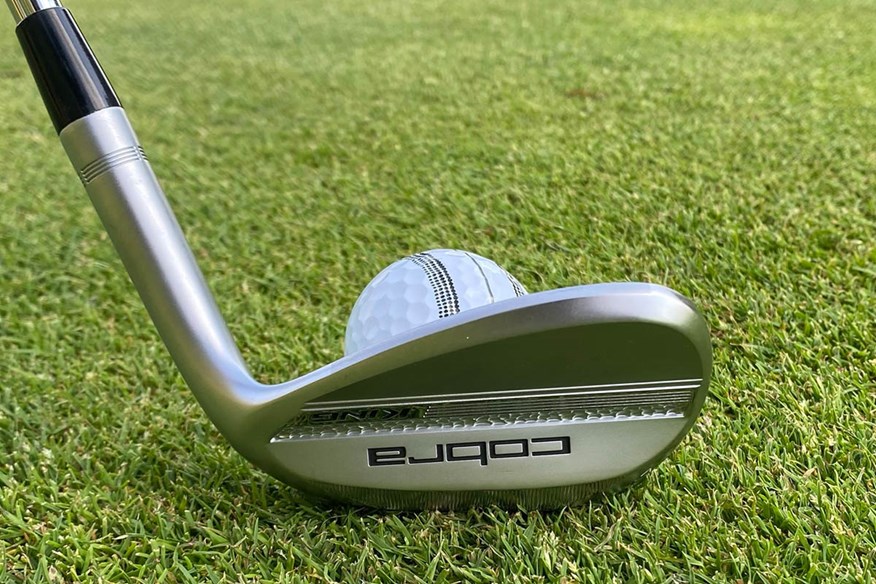


Cobra's steady improvement year-on-year with their wedges is best exemplified in their finishing position here. Three-quarter shots are difficult enough already due to the changes required in the golfer's delivery, so having a wedge that you can trust is paramount to playing well.
With super tight deviation in the King wedge's Ball Speed, Spin, Launch, and Descent Angle, Cobra are allowing for players to have a high level of consistency when playing into difficult flags and positions. This means you'll get repeatable carry distances and easy-to-predict release, even if you aren't taking full swings at the target.
What our tester says:
There’s a unique style to the Cobra King wedges in every way. The badging on the back, with the almost pebble-dash bar effect, makes this club stand out on the shelf compared to other models. There’s also quite a rounded look, with the leading edge almost curving into the toe and then the topline after it. It doesn’t suit my natural preferences, but there’s no doubt it plays well!
Data
Approach
Clubhead Speed 77.5 MPH | Ball Speed 79.9 MPH | Carry 95.4 Yards | Spin 9,522 RPM | Launch 28.6º | Height 22.3 Yards | Descent Angle 48.8º | L-R Dispersion 1.6 Yards
Pitching
Clubhead Speed 64.5 MPH | Ball Speed 69.6 MPH | Carry 79.3 Yards | Spin 7,694 RPM | Launch 28.5º | Height 15.9 Yards | Descent Angle 44.1º | L-R Dispersion 2.4 Yards
| Loft Options | 48º / 50º / 52º / 54º / 56º / 58º / 60º |
| Grinds | Versatile (V) / Drop (D) / Widelow (W) / Tour (T) |
| Finishes | Chrome / Black / Raw |
| Stock Shaft | True Temper Dynamic Gold Spinner |
| Stock Grip | Lamkin Crossline 60R |
Runner-up for Pitch Shots



As we said in the Approach Shots breakdown, there needs to be high consistency across all multiple categories to earn the position of Best Wedge 2025. With a Top-3 position already notched up for our full swing category, coming in with a second-place for Pitch Shots has given great reason for the Milled Grind 4 to steal the top spot for the year.
When it comes to the actual data, it's the repeatability that the Milled Grind 4 produces that has impressed us most. With one of the highest spin rates, again, on these three-quarter swings, coupled with a tight 195 rpm of variation, controlled Height and Descent Angles, you've got the basis for an iconic wedge from every distance.
What our tester says:
TaylorMade are just getting better and better with their wedge design! I like the classic look of the Milled Grind slightly more than the Hi-Toe model, and I think it makes me more comfortable because of that. The control and spin on offer is amazing, and it’s an elite-level wedge being offered by the brand now.
Data
Approach
Clubhead Speed 80.1 MPH | Ball Speed 84.1 MPH | Carry 102.0 Yards | Spin 10,046 RPM | Launch 27º | Height 23.4 Yards | Descent Angle 48.9º | L-R Dispersion 3.9 Yards
Pitching
Clubhead Speed 61.1 MPH | Ball Speed 67.1 MPH | Carry 74.3 Yards | Spin 7,614 RPM | Launch 26.6º | Height 13.3 Yards | Descent Angle 41.1º | L-R Dispersion 3.9 Yards
| Loft Options | 46º / 48º / 50º / 52º / 54º / 56º / 58º / 60º46-60º |
| Grinds | Low / Low-V / Standard / Standard-C / High / High-W |
| Finishes | Chrome / Black |
| Stock Shaft | True Temper Dynamic Gold 115g Tour Issue |
| Stock Grip | Lamkin Crossline 360 |
Third-best for Pitch Shots
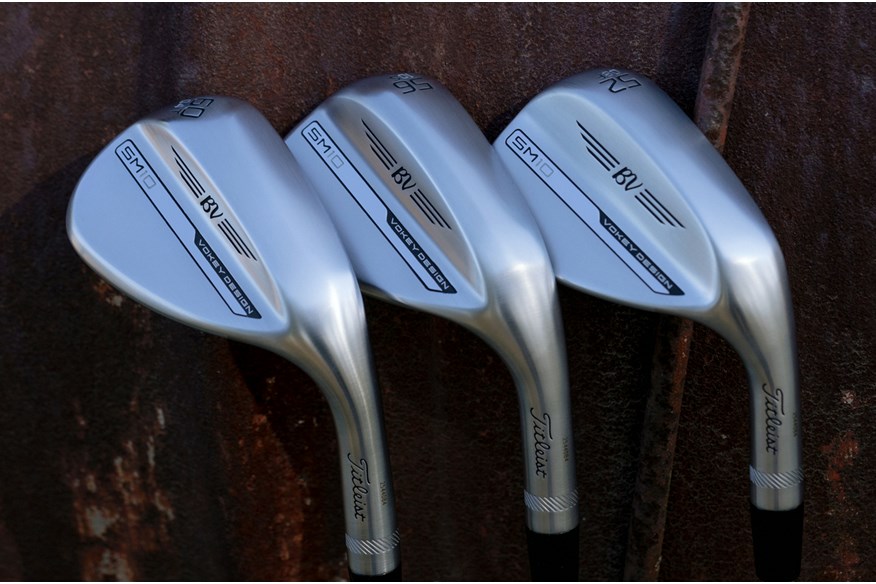

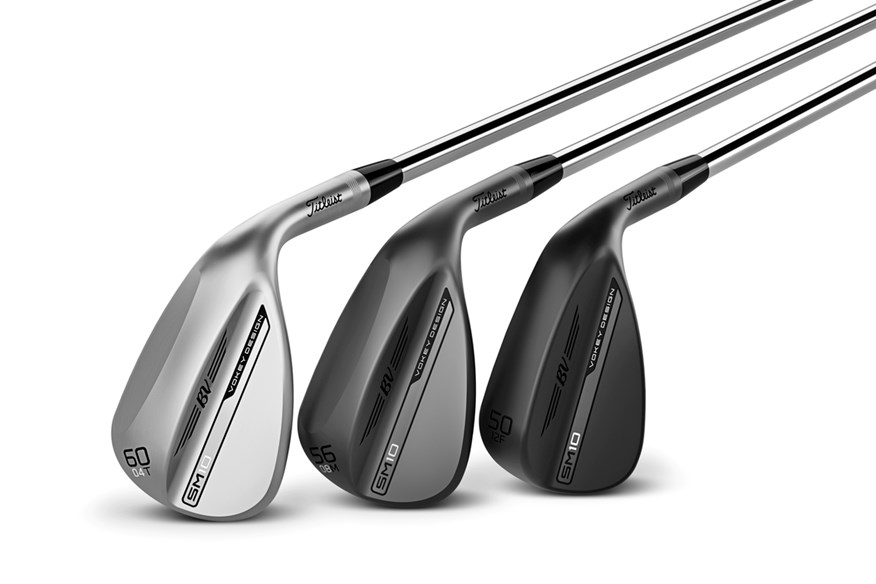
The key design elements that Vokey have adapted over the previous few generations of the Spin Milled series make this wedge one of the most interesting for golfers to play, regardless of how much they may or may not be attached to the brand's reputation.
The variable CG location, which is adapted into an optimum position throughout the line-up of lofts, helps to promote minimal variation from shot to shot, a trait that only aids in the predictability that golfers need.
With 0.9º in Launch deviation, 0.4º in Descent Angle, and 0.1º deviation in Height, the Vokey SM10 lives up to its own gold standards with exemplary performance.
What our tester says:
I think it wouldn’t be unfair to call Vokey wedges a jack-of-all-trades. That might seem like a bad thing, but what I mean is that they can do anything you need them to, and they can be adapted to your needs. It’s still one of the best wedges ever made.
Data
Approach
Clubhead Speed 80.7 MPH | Ball Speed 87.1 MPH | Carry 107.5 Yards | Spin 9,366 RPM | Launch 27.3º | Height 25.5 Yards | Descent Angle 49.9º | L-R Dispersion 2.3 Yards
Pitching
Clubhead Speed 61.0 MPH | Ball Speed 68.1 MPH | Carry 76.7 Yards | Spin 6,935 RPM | Launch 27.0º | Height 14.0 Yards | Descent Angle 41.5º | L-R Dispersion 2.5 Yards
| Loft Options | 46º / 48º / 50º / 52º / 54º / 56º / 58º / 60º / 62º (44º Wedgeworks) |
| Grinds | F / S / M / D / K / T Stock (A / A+ / L / K* / V Wedgeworks) |
| Finishes | Tour Chrome / Nickel / Jet Black / Raw (Wedgeworks) / Oil Can (Limited Release) |
| Stock Shaft | True Temper Dynamic Gold S200 |
| Stock Grip | Golf Pride Tour Velvet |
Best Golf Wedges 2025: Best for Stopping Power
Best for Stopping Power
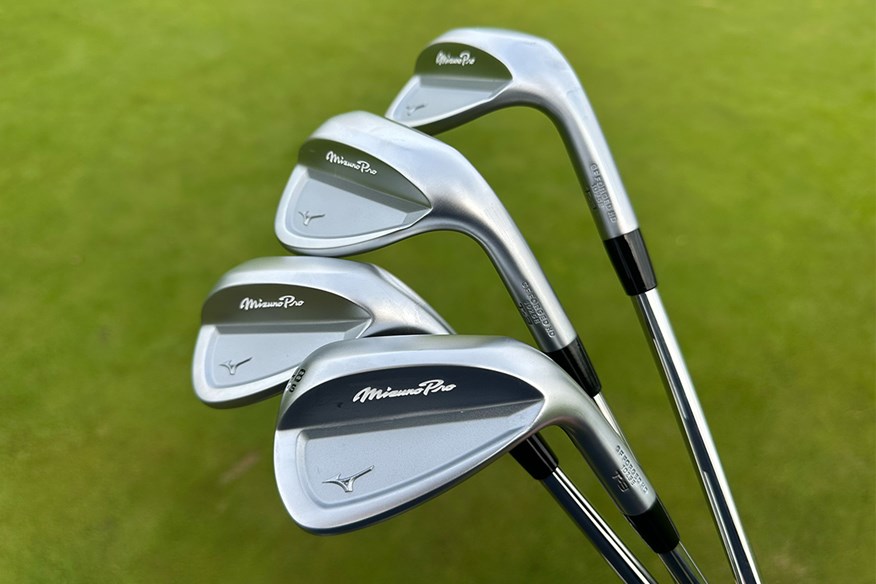


Another category and another feature for the Mizuno Pro T-3 wedge! There's two key elements that make up the Best for Stopping Power awards - Spin and Descent Angle. The higher these two are the faster the ball is going to stop on the greens, and for golfers that play in firm and fast conditions, it's the number one concern when they're making a purchase of new wedges.
Mizuno's cavity model of the new Pro T-series wedges has positions of number one in max spin and fifth highest for descent angle, a combination of characteristics that allow for extreme stopping power when attacking greens.
That, along with the help from the small pocket cavity, means this is a formidable wedge in the hands of virtually any golfer, and we'd thoroughly recommend it.
What our tester says:
Honestly, I’d struggle to tell the difference between the T-1 and the T-3 at address. They both look superb, with maybe, maybe, a slightly larger size to the T-3, but nothing close to putting me off. It’s a great wedge, and I feel like the extra help from the cavity will be great for plenty of golfers out there.
Data
Approach
Clubhead Speed 79.7 MPH | Ball Speed 83.1 MPH | Carry 100.1 Yards | Spin 10,096 RPM | Launch 27.7º | Height 23.4 Yards | Descent Angle 49.3º | L-R Dispersion 4.2 Yards
Pitching
Clubhead Speed 63.1 MPH | Ball Speed 67.9 MPH | Carry 76.2 Yards | Spin 7,595 RPM | Launch 27.7º | Height 14.4 Yards | Descent Angle 42.4º | L-R Dispersion 1.2 Yards
| Loft Options | 46º / 48º / 50º / 52º / 54º / 56º / 58º / 60º |
| Grinds | S / M / C |
| Finishes | Soft White Only |
| Stock Shaft | True Temper Dynamic Gold S400 |
| Stock Grip | Golf Pride MCC |
Runner-up for Stopping Power



In the same vein as the King Wedge's win in the 'Best for Pitching' category, it's been great to see how Cobra have been able to take what was once considered a weakness and turn it into a really impressive aspect of their product family.
With the highest performance for Descent and Spin in partial, three-quarter swings, as well as being the fourth-highest Spin model on full swing approach shots, the Cobra King is well placed to not only come down steeply onto the green, but bite and stop where it lands. This should give you a great ability to truly attack tucked pins from virtually any lie, in both fairway and rough.
What our tester says:
There’s a unique style to the Cobra King wedges in every way. The badging on the back, with the almost pebble-dash effect on the heel-toe bar, makes this club stand out on the shelf compared to other models. There’s also quite a rounded look, with the leading edge almost curving into the toe and then the topline after it. It doesn’t suit my natural preferences, but there’s no doubt it plays well!
Data
Approach
Clubhead Speed 77.5 MPH | Ball Speed 79.9 MPH | Carry 95.4 Yards | Spin 9,522 RPM | Launch 28.6º | Height 22.3 Yards | Descent Angle 48.8º | L-R Dispersion 1.6 Yards
Pitching
Clubhead Speed 64.5 MPH | Ball Speed 69.6 MPH | Carry 79.3 Yards | Spin 7,694 RPM | Launch 28.5º | Height 15.9 Yards | Descent Angle 44.1º | L-R Dispersion 2.4 Yards
| Loft Options | 46º / 48º / 50º / 52º / 54º / 56º / 58º / 60º |
| Grinds | Versatile (V) / Drop (D) / Widelow (W) / Tour (T) |
| Finishes | Chrome / Black / Raw |
| Stock Shaft | True Temper Dynamic Gold Spinner |
| Stock Grip | Lamkin Crossline 60R |
Third-best for Stopping Power
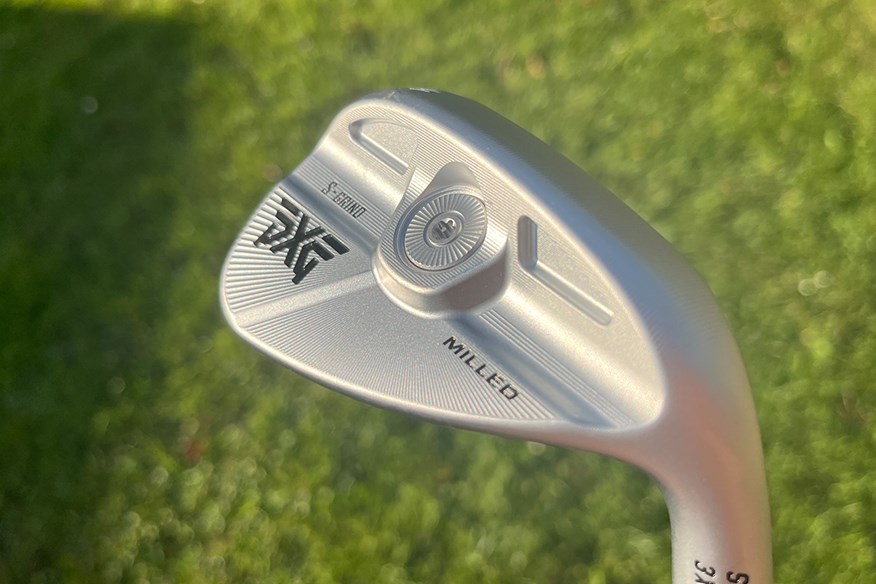

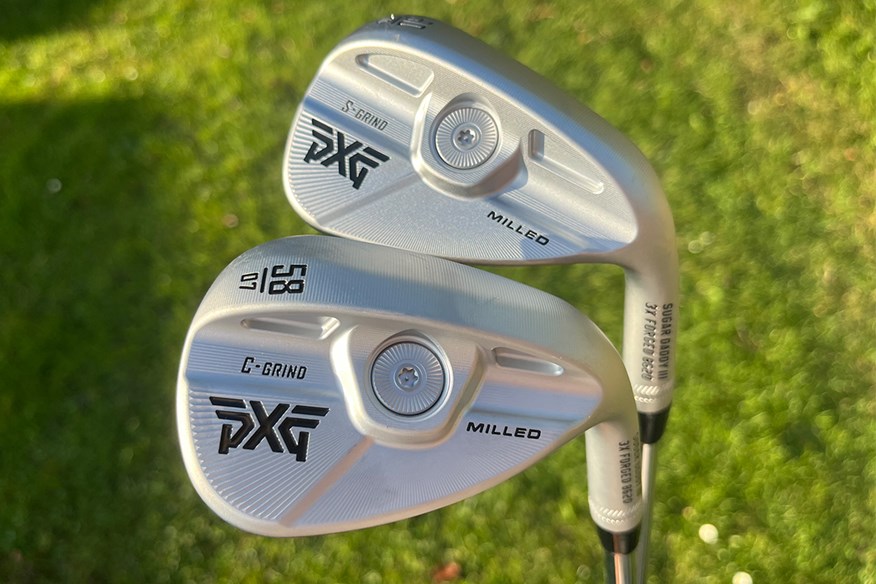
PXG have been one of the market leaders in applying cutting-edge technology to every aspect of the equipment business, wedges being no exception. The company is particularly proud of the triple forging technique in the Sugar Daddy III heads, a process that allows for an incredibly tight grain structure in the metal that gives the wedges longer life and better feel. Our test data shows the Sugar Daddy III as being one of the best wedges of 2025 for the ability to grab and hold greens, so you can attack the pins.
Each head is then CNC Milled to an exact, final shape, which also allows for PXG to implement their patented precision weighting system, giving the fitter and the golfer control over the exact feel and feedback they need and want to receive.
Our test data shows the Sugar Daddy III as being one of the best wedges of 2025 for the ability to grab and hold greens, so you can attack the pins. You want to and trust that the ball will finish exactly where you want to land it.
What our tester says:
I really enjoy the soft ‘click’ that comes off the PXG wedges. It’s a sign, for me, of how well-constructed they make their clubs, as it feels familiar to some of the best-regarded wedges in the game. Aside from the feel, the SDIII does have a slightly more squat, or short heel-to-toe length, but if you miss high and low instead of toe or heel, this won’t be an issue at all.
Data
Approach
Clubhead Speed 80.1 MPH | Ball Speed 87.0 MPH | Carry 107.4 Yards | Spin 9,296 RPM | Launch 27.3º | Height 25.3 Yards | Descent Angle 49.8º | L-R Dispersion 5.6 Yards
Pitching
Clubhead Speed 62.2 MPH | Ball Speed 70.2 MPH | Carry 80.4 Yards | Spin 7,311 RPM | Launch 27.1º | Height 15.1 Yards | Descent Angle 42.6º | L-R Dispersion 3.3 Yards
| Loft Options | 50º / 52º / 54º / 56º / 58º / 60º |
| Grinds | S / C / BP |
| Finishes | Chrome / Black |
| Stock Shaft | True Temper Dynamic Gold MID 115g |
| Stock Grip | PXG Z5 Black |
Best Golf Wedges 2025: Data Tables
Approach shots data
| Make | Model | Club Speed (mph) | Ball Speed mph) | Carry Distance (yds) | Spin Rate (rpm) | Launch Angle (°) | Peak Height (yds) | Descent Angle (°) | L-R Dispersion |
| Bettinardi | HDX | 79.3 | 85.9 | 106.0 | 9,141 | 26.6 | 23.9 | 48.7 | 4.9 |
| Std Dev | 0.6 | 1.6 | 2.9 | 657 | 1.3 | 1.5 | 1.1 | N/A | |
| Callaway | Opus | 79.6 | 85.5 | 105.4 | 9,074 | 27.0 | 24.1 | 48.8 | 3.2 |
| Std Dev | 1.2 | 3.5 | 5.3 | 275 | 1.0 | 2.9 | 2.0 | N/A | |
| Cleveland | CBX4 | 79.4 | 85.5 | 105.1 | 9,306 | 27.2 | 24.3 | 49.1 | 0.9 |
| Std Dev | 0.5 | 1.9 | 3.1 | 224 | 0.3 | 1.1 | 0.5 | N/A | |
| Cleveland | RTZ | 79.0 | 84.2 | 103.0 | 9,451 | 26.3 | 22.6 | 47.9 | 2.6 |
| Std Dev | 1.6 | 3.1 | 4.7 | 601 | 1.4 | 2.2 | 1.8 | N/A | |
| Cobra | King | 77.5 | 79.9 | 95.4 | 9,522 | 28.6 | 22.3 | 48.8 | 1.6 |
| Std Dev | 0.0 | 2.5 | 4.1 | 240 | 0.9 | 2.0 | 1.3 | N/A | |
| Fourteen | FRZ | 78.7 | 85.9 | 106.3 | 8,708 | 27.3 | 24.5 | 49.1 | 7.4 |
| Std Dev | 1.0 | 1.3 | 2.4 | 491 | 1.0 | 1.7 | 1.3 | N/A | |
| Mizuno | Pro T1 | 80.1 | 85.2 | 104.4 | 9,537 | 27.0 | 23.9 | 49.1 | 3.5 |
| Std Dev | 0.8 | 1.1 | 1.7 | 549 | 0.8 | 0.9 | 0.7 | N/A | |
| Mizuno | Pro T3 | 79.7 | 83.1 | 100.1 | 10,096 | 27.7 | 23.4 | 49.3 | 4.2 |
| Std Dev | 1.5 | 1.5 | 2.4 | 273 | 0.4 | 1.3 | 0.8 | N/A | |
| Ping | s159 | 80.4 | 87.7 | 108.9 | 8,492 | 28.6 | 27.0 | 50.8 | 5.7 |
| Std Dev | 0.1 | 1.1 | 2.2 | 398 | 0.6 | 0.6 | 0.3 | N/A | |
| PXG | SugarDaddy | 80.1 | 87.0 | 107.4 | 9,296 | 27.3 | 25.3 | 49.8 | 5.6 |
| Std Dev | 0.5 | 0.9 | 1.8 | 361 | 0.6 | 0.5 | 0.5 | N/A | |
| TaylorMade | MG4 | 80.1 | 84.1 | 102.0 | 10,046 | 27.0 | 23.4 | 48.9 | 3.9 |
| Std Dev | 0.8 | 2.2 | 3.3 | 159 | 0.5 | 1.9 | 1.4 | N/A | |
| Titleist | SM10 | 80.7 | 87.1 | 107.5 | 9,366 | 27.3 | 25.5 | 49.9 | 2.3 |
| Std Dev | 0.7 | 2.2 | 3.7 | 323 | 0.8 | 1.9 | 1.1 | N/A | |
| Wilson | ZM | 79.7 | 87.4 | 108.7 | 8,474 | 28.1 | 26.3 | 50.2 | 6 |
| Std Dev | 0.5 | 1.5 | 2.8 | 471 | 0.7 | 1.4 | 0.9 | N/A | |
| Test | Average | 79.6 | 85.3 | 104.6 | 9,270 | 27.4 | 24.4 | 49.3 | 4.0 |
| Std Dev | 0.8 | 2.1 | 3.8 | 506 | 0.7 | 1.4 | 0.8 | N/A |
Pitching Shots Data
| Make | Model | Club Speed (mph) | Ball Speed mph) | Carry Distance (yds) | Spin Rate (rpm) | Launch Angle (°) | Peak Height (yds) | Descent Angle (°) | L-R Dispersion |
| Betttinardi | HDX | 63.1 | 70.9 | 81.1 | 7,544 | 25.4 | 14.2 | 41.2 | 1.8 |
| Std Dev | 2.1 | 3.0 | 5.3 | 430 | 0.4 | 1.2 | 1.0 | N/A | |
| Callaway | Opus | 59.4 | 66.5 | 73.8 | 7,050 | 27.6 | 13.7 | 41.7 | 1.2 |
| Std Dev | 1.6 | 3.2 | 5.7 | 253 | 0.8 | 1.7 | 1.5 | N/A | |
| Cleveland | CBX4 | 60.9 | 67.8 | 76.2 | 6,923 | 27.5 | 14.1 | 42.0 | 3.6 |
| Std Dev | 0.5 | 1.6 | 2.8 | 672 | 0.7 | 0.7 | 0.7 | N/A | |
| Cleveland | RTZ | 63.4 | 70.2 | 80.4 | 7,358 | 26.9 | 15.0 | 42.4 | 2.6 |
| Std Dev | 1.3 | 2.2 | 3.8 | 655 | 1.1 | 0.8 | 0.7 | N/A | |
| Cobra | King | 64.5 | 69.6 | 79.3 | 7,694 | 28.5 | 15.9 | 44.1 | 2.4 |
| Std Dev | 1.6 | 1.5 | 2.7 | 236 | 0.4 | 1.0 | 0.9 | N/A | |
| Fourteen | FRZ | 61.2 | 68.2 | 76.9 | 6,847 | 27.3 | 14.2 | 42.0 | 2.4 |
| Std Dev | 1.1 | 1.3 | 2.2 | 737 | 0.6 | 0.6 | 0.7 | N/A | |
| Mizuno | Pro T-1 | 62.6 | 68.7 | 77.6 | 7,261 | 26.8 | 14.2 | 41.7 | 0.8 |
| Std Dev | 0.5 | 0.6 | 1.3 | 408 | 0.9 | 0.7 | 0.9 | N/A | |
| Mizuno | Pro T-3 | 63.1 | 67.9 | 76.2 | 7,595 | 27.7 | 14.4 | 42.4 | 1.2 |
| Std Dev | 0.9 | 1.9 | 3.7 | 399 | 1.2 | 1.4 | 1.7 | N/A | |
| Ping | S159 | 59.9 | 66.4 | 74.0 | 6,732 | 28.2 | 14.0 | 42.3 | 3.5 |
| Std Dev | 1.1 | 2.4 | 4.4 | 188 | 0.7 | 1.2 | 1.0 | N/A | |
| PXG | Sugar Daddy III | 62.2 | 70.2 | 80.4 | 7,311 | 27.1 | 15.1 | 42.6 | 3.3 |
| Std Dev | 0.8 | 2.3 | 3.9 | 562 | 1.0 | 0.9 | 0.8 | N/A | |
| TaylorMade | MG4 | 61.1 | 67.1 | 74.3 | 7,614 | 26.6 | 13.3 | 41.1 | 3.9 |
| Std Dev | 1.4 | 1.9 | 3.2 | 195 | 0.7 | 0.6 | 0.3 | N/A | |
| Titleist | SM10 | 61.0 | 68.1 | 76.7 | 6,935 | 27.0 | 14.0 | 41.5 | 2.5 |
| Std Dev | 1.1 | 1.2 | 1.8 | 291 | 0.9 | 0.1 | 0.4 | N/A | |
| Wilson | ZM | 62.0 | 69.5 | 79.5 | 6,866 | 27.8 | 15.3 | 42.9 | 2.8 |
| Std Dev | 1.7 | 2.4 | 4.3 | 374 | 0.7 | 1.1 | 0.9 | N/A | |
| Test | Average | 61.9 | 68.5 | 77.4 | 7,210 | 27.3 | 14.4 | 42.1 | 2.5 |
| Std Dev | 1.5 | 1.5 | 2.5 | 336 | 0.8 | 0.7 | 0.8 | 1.0 |

Best Golf Wedges 2025: Buying Guide
When it comes to choosing the best golf wedges for your bag, there’s more to consider than just lofts and spin numbers. From matching your iron set to figuring out bounce and grind, this guide breaks down everything you need to know to make the right call for your short game.
Iron set vs premium wedge
One of the first decisions to make when adding wedges to your bag is whether to stick with the wedges that come with your iron set or opt for standalone premium wedges.
Set wedges – typically labelled PW (Pitching Wedge) and AW (Approach Wedge) – match the look, design, and performance of your irons. They’re built with full-swing consistency in mind and tend to be more forgiving, which suits players who mostly use their wedges for full shots or one specific task, like escaping bunkers.
Premium wedges are designed separately from iron sets and have a distinct, often sleeker, blade-like look. They’re stamped with lofts instead of names (and often include bounce and grind details too). These wedges offer more versatility and control, making them ideal for players who want to hit a wide variety of shots – pitches, chips, flops, and bunker escapes – with one club.
Bottom line:
If you mainly hit full shots with your wedges, a matching iron set wedge makes sense. If you want creativity and control around the greens, premium wedges are the way to go.
Lofts and gapping
This seems like one of the most obvious parts of buying wedges, but there’s still a lot of decisions to make and concepts to consider. There are two things to consider when choosing lofts:
- How many wedges can you fit in your bag?
Not literally! But in terms of your 14-club limit. If your long game includes multiple fairway woods or hybrids, you might only have space for two wedges. In that case, you’ll need wider loft gaps between them to ensure proper distance coverage. Tiger Woods, for example, uses a 49º pitching wedge, a 56º sand wedge, and a 60º lob wedge. It works for him – and it can work for you too – as long as the gaps are intentional. - How are you using your wedges?
If you hit full shots with all your wedges, you’ll want consistent gapping – ideally 10-15 yards between each club. If you’re mostly using your sand and lob wedges for chips and pitches, gapping matters less, and versatility becomes more important.
Quick tip: Find the loft of your pitching wedge, then build your wedge setup in 4-6º loft increments from there.
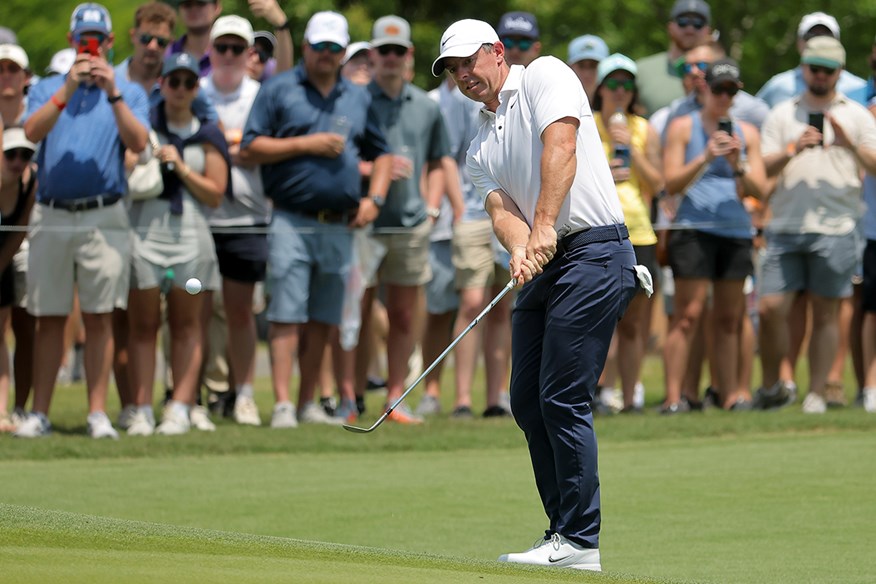
Grind
Grind refers to the shape of the sole and how the designer has cut away certain parts of the metal to provide a particular kind of performance and turf interaction, with varying styles working better or worse for certain club deliveries and course conditions.
Grinds remove material from specific parts of the sole, like the heel, toe, or trailing edge, to alter how the club interacts with the turf. This can help you open the face without raising the leading edge too much, making it easier to hit higher, softer shots. A raised leading edge will lead to thin shots, which makes greenside chips a nightmare.
Generally:
- More sole relief (heel/toe shaved) = More shot versatility, lower bounce.
- Less sole shaping (full sole) = More forgiveness, higher bounce.
If you play your wedges square to the target, a full grind will suit you better. If you like to open the face and get creative, a more aggressive grind gives you the tools to do that.
Bounce
With so many references to bounce in our previous section, this is the perfect time to explain how bounce can affect your wedge’s performance.
Bounce is the angle between the leading edge and the lowest point on the sole. In short, it’s what stops your wedge from digging into the turf.
High bounce (10º+): Better for soft turf, bunkers, or steeper swings. It adds forgiveness by helping the sole “bounce” off the ground instead of digging.
Low bounce (4-8º): Better for firm ground, tight lies, and shallow swings. It allows the leading edge to sit closer to the turf for cleaner contact.
Pro tip: Check the wear pattern on your wedges.
Wear near the leading edge = steep swing = need more bounce.
Wear closer to the middle or rear = shallow swing = try less bounce.
The final way that you can see whether you need more or less bounce in your short game is by looking at the face of your wedges. Ideally, we’d like to see the wear centered around the 4th or 5th groove from the bottom.
Anything higher than that, you might do better with more bounce in your wedges. Equally, if you’re wearing down the wedge lower than those grooves, we’d suggest trying out lower bounce options.
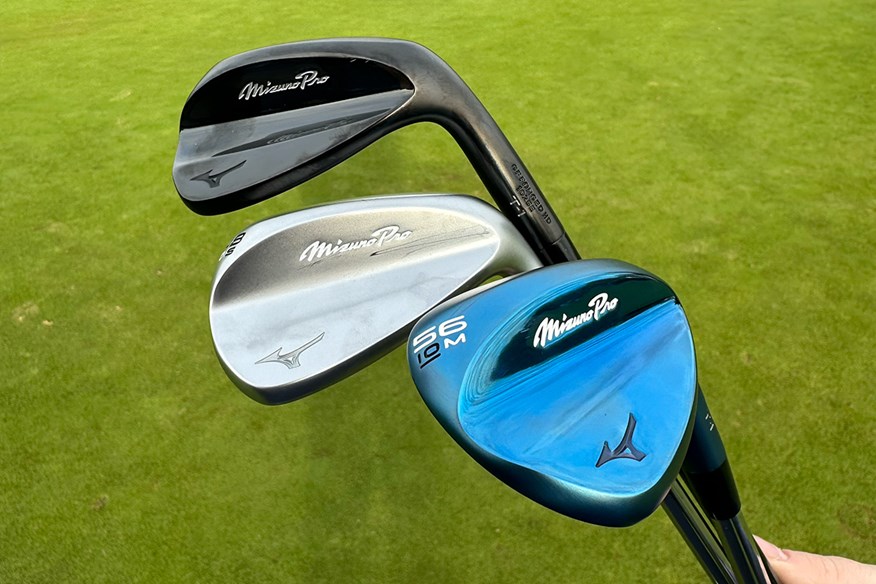
Finishes and grooves
Most manufacturers offer multiple finish options, often including chrome/satin, black/dark, and raw. This is a personal choice on what you’d prefer to look down at more than anything, but there can be some performance benefits.
- Chrome/Satin: Classic look, shows less wear.
- Black/Dark: Reduces glare in sunny conditions.
- Raw: Designed to rust over time for a rougher face, which can slightly increase spin in wet conditions.
The real key to spin? Clean grooves and consistent contact.
Ultimately, spin is created from the ball interacting with the face. The cleaner the connection, the more the ball bites into the wedge face, and the higher the spin. A less direct connection and you’ll get less spin.
This is where grooves come in. Grooves are designed to allow debris and moisture to be filtered out, stopping them from interfering with direct contact. When grooves are full, such as in wet conditions, there’s nowhere for the debris on the wedge’s face to go, so you get less spin.
Micro-grooves – the small milling patterns that you’ll notice in between the full-size grooves – aim to help retain some spin in less-than-ideal conditions.
Raw faces are trying to help do the same, except by encouraging a build-up of rust instead. Rust creates a rougher surface on the face, allowing for extra grip on the ball when the grooves are filled already. While you will see more spin from the rust, it’ll be in the 300-400 RPM range, never something game-changing in performance.
Shafts and grips
Shafts and grips are often overlooked in wedge fitting, but they matter more than you might think.
If you’re playing lightweight shafts in your irons (e.g., 100g KBS Tour Lite Regular), and your wedges have heavier Tour-weight Dynamic Gold shafts (115–130g), you might struggle with consistency and timing.
You don’t have to match your iron shafts perfectly, but your wedge shafts should complement your full swing and short game feel.
Likewise, make sure your grips are the right size and texture. It’s the only contact point between you and the club, so don’t ignore it.
Pitching vs Gap vs Approach vs Sand vs Lob – What’s the difference?
These names are just shorthand for different loft ranges:
- Pitching Wedge (PW): 44–48º
- Gap / Approach / Attack Wedge (GW / AW / UW): 50–52º
- Sand Wedge (SW): 54–56º
- Lob Wedge (LW): 58º and above (most stop at 60º or 64º)
Modern game-improvement irons often have stronger lofts, so your PW might be as low as 41º. That’s why some sets include both a Gap and an Approach wedge to fill the bigger gaps.
Don’t worry if your set has a Gap and an Approach wedge – it’s just a reflection of stronger lofts in modern irons.
Speciality clubs
Some brands offer wedges or wedge replacements designed to solve very specific problems. Ping, for example, makes the BunkR, a wedge specifically engineered to help golfers get out of the sand.
These niche clubs can work, especially for those struggling with one aspect of the game, but they’re very situation-specific. If you’re considering one, speak to a professional fitter to make sure it’s the right decision for you before jumping in..
Cost
Wedges tend to cost between $160–$200 each, and most models from major brands fall within this range. Limited editions, custom grinds, or exotic finishes can cost more.
A few great-value wedges punch well above their price, like the Wilson Staff Model ZM – a brilliant performer at a more affordable price point.
Tip: If you can, always try to buy wedges new. Unlike drivers or irons, wedge faces wear down fast. Grooves lose their edge, spin drops, and control disappears.
Expect to replace your wedges every 75–125 rounds, depending on how much you play and practice. That’s roughly every 2–3 years for most golfers.
Fitting
Feeling overwhelmed by all the grind, bounce, and loft options? A professional club fitter can help.
Fitters can not only dial in the right setup for your game but also explain why it works, which gives you more confidence over every shot.
You can find fitters at big-box stores like PGA Tour Superstore, or independent specialists with dedicated short game facilities.
Read our full guide to custom fitting here.
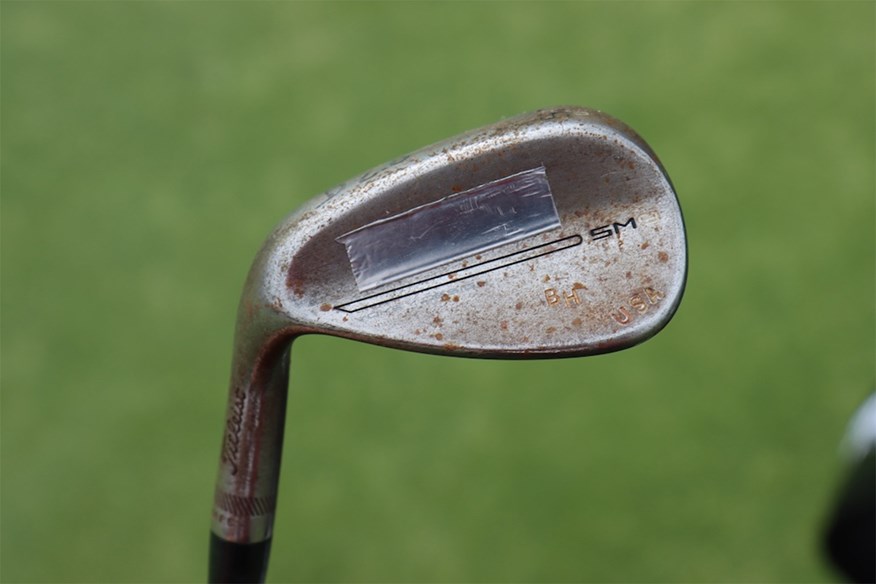
Best Golf Wedges 2025: FAQs
What is the most played wedge on Tour?
The most played wedge on Tour is the Titleist Vokey model. Vokey wedges have been the most used wedge by both professionals and amateurs for many years now, including world number one Scottie Scheffler, as the brand offers a huge variety of lofts, grinds, bounces, and finishes to suit the golfer’s desires.
The latest model in the Titleist Vokey range is the SM10, which is one of our favourite-ever wedges.
How often should I change my wedges?
Ideally, you should be changing your wedges every 75-125 rounds. If you practice often, or you play in sandy conditions, you’d be better changing at the shorter end of that range, but most golfers will want to update wedges every 2-3 years.
Simple test: Rub your finger across the bottom grooves, then the top part of the face. If they feel equally rough, you’re fine. If the bottom feels smooth, it’s time for a new wedge.
What is the best wedge for chipping?
The best wedge for chipping is the one that you feel most comfortable using. Ultimately, you’ve got to feel happy standing over the ball, so if there’s a wedge that you prefer to use, then we’d stick with that until you can practice more with the others.
Most golfers get maximum spin with a Gap wedge, so it’s a great place to start, but some golfers will refuse to use anything except a Lob wedge for chipping. Just bear in mind that the more loft you use, the higher the risk of a thin or fat as there isn’t as much of the face available for you to strike.
If you’re still struggling with a Gap wedge, go down to a Pitching wedge – or even a 9- or 8-iron – until you can gain more confidence with your higher-lofted wedges.
Do I need numbered wedges as well as sand and lob wedges?
Named wedges, like Sand or Lob wedges, are the same as numbered wedges; it’s just a simpler label for them. Iron sets that include wedges in them tend to use names like SW/Sand Wedge to avoid confusing them with the numbers on the rest of the irons. Premium wedges tend to use numbered wedges, which show their loft instead.
